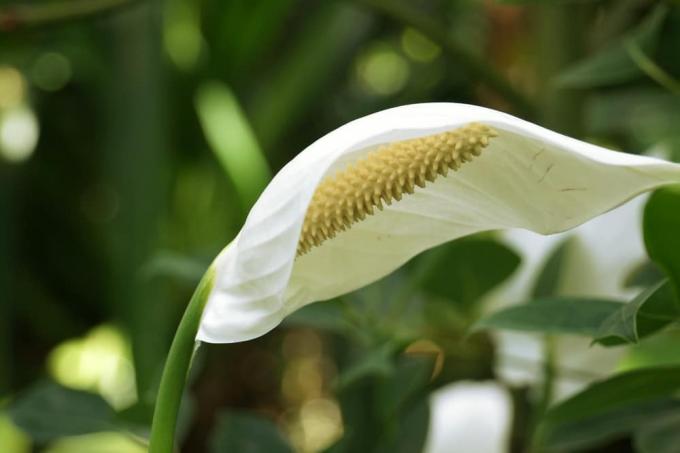

Table of contents
- Origin of the special hydrangea
- Endless Summer hydrangeas in winter
- Location and ground for Endless Summer
- Cutting the Endless Summer
- Water the Hydrangea Endless Summer
- Fertilize properly
- Worth knowing about the hydrangea Endless Summer shortly
The hydrangea Endless Summer is considered a very special plant among the hydrangeas. Because it is extremely hardy, easy to care for and presents itself in a fascinating, magnificent pink and blue blossom all year round.
Origin of the special hydrangea
The first cultivars of hydrangea arrived in the 18th century. Century from Japan to England. Since that time, many different forms and varieties have been bred. This also applies to the hydrangea Endless Summer, which was developed by the renowned breeder Prof. dr Michael Dirr the
University of Georgia has been discovered. It has also been available on the German market since 2003 and has adorned numerous gardens and front yards ever since.The Endless Summer has some special characteristics compared to other hydrangeas. Because the hydrangea flowers 10 to 12 weeks longer a year and also forms approx. new flowers every 6 weeks, which shine in all their glory in the same summer.
Endless Summer hydrangeas in winter
Another great advantage of the plant: its high resistance to frost and the ability to hibernate outdoors unscathed at temperatures down to -30 °C. In addition, the hydrangea is also able to form flowers in colder climates as they are not depends on annual shoots for flowering and flowers on both old and new wood. Due to its extraordinary robustness, it is possible to leave the hydrangea outdoors in the tub over the winter.
But even if the Endless Summer hydrangeas are very hardy, young plants in particular should be in the time of the Late frosts get a cover as the plant starts to flower quite early and these flower heads don't are frost hardy.
Other properties of Endless Summer hydrangea:
- ball-shaped flowers with a diameter of 15 cm - 20 cm
- Flowering time is from May to October
- the plant reaches a height of between 100 cm and 130 cm
- large deciduous leaves
- absolutely hardy
- Frost damage has no effect on the number of flowers
Location and ground for Endless Summer
The hydrangea thrives in both sun and shade but prefers a semi-shady spot, ideally with mid-morning sun and mid-afternoon shade. The soil should be permeable, lime-free and rich in humus. If the location does not meet the requirements of this hydrangea species, it can also be used for several It can be transplanted in spring without any problems because it has a compact and very fine habit root system.
Cutting the Endless Summer
Pruning is much easier with this hydrangea due to its flowering behavior. Therefore, if necessary, the Endless Summer can easily be pruned back in spring without having to forego a rich blessing of flowers in summer. However, with young plants you should limit yourself to beauty care and only remove annoying branches.
If, on the other hand, the older plants are lush, then a topiary can also be done, but this should not reach into the old wood. During the summer it is advisable to remove wilted flowers above the nearest leaf base to encourage flowering. The hydrangea can then be thinned out a bit from August, so that the inner area of the Plant receives sufficient light, as a high proportion of light has a positive effect on bud formation.
Old flowers remain on the hydrangea from winter to spring as they act as frost protection for the formation of new buds. To prevent the shoots from breaking off when the flowers are quite heavy, the Endless Summer hydrangea can be supported. The plant should be thinned out for the first time after 5 to 6 years by removing a good third of the oldest shoots.
Water the Hydrangea Endless Summer
In the hot and dry summer period, the Endless Summer hydrangea needs sufficient watering and even soil moisture. If there are few flowers and very lush leaves, this is a sign of overwatering. It is also normal for this species of hydrangea to show some wilting in the heat of the day for a short period of time, but this is regulated by a normal water supply. It is therefore better to water the plant a little more at regular intervals, even in the bucket, than to water it every day.
Fertilize properly
Hydrangeas are fertilized with a special hydrangea fertilizer or a nitrogen-rich complete fertilizer that may only contain a little phosphorus because the plants cannot tolerate too much phosphorus. It can be fertilized in spring and as a long-term fertilizer again in early summer. If the plants are growing in the garden, the fertilizer should have a solid consistency, while potted hydrangeas with liquid fertilizer should be fertilized regularly from March to August. In August, when the plant will be in full bloom, stop fertilizing because now it does not need as much nutrients.
Since every garden lover can determine the color of his Endless Summer hydrangea himself, the acidity (pH value) of the soil is of great importance. It shines in a delicate pink in soil with a low acidic pH of 5.5. With a low pH of 4 to 4.5 and aluminum oxide, beautiful blue flowers are formed.
If the hydrangea should keep its blue color or pink flowers turn blue, you can use rainwater on the one hand be watered and on the other hand be given a little peat to the plant - because both will improve the pH value in the soil reduce. In addition, she should be given special fertilizer containing aluminum alum. If the soil has the required pH value, the hydrangea can obtain the necessary nutrients from the fertilizer for the colouration. Due to these different soil requirements, it is important to ensure that special mixed fertilizers for hydrangeas contain aluminum.
Worth knowing about the hydrangea Endless Summer shortly
Hydrangea Endless Summer is an easy-care, undemanding plant, which is characterized by winter hardiness at temperatures down to -30 °C. It forms new flowers all summer long, even on young shoots, and shines in all its glory for around 10 to 12 weeks longer a year. Like all plants, the Endless Summer hydrangea should be watered regularly and fertilized in spring or late summer. It is suitable as a container or free-standing plant and shows a pink or blue flower color depending on the soil conditions.
- Endless Summer is a new species of hydrangea that promises endless blooms with its name.
- hydrangeas previously bloomed on two-year-old wood. However, Endless Summer also flowers on the fresh shoots.
- Due to their large leaves you can take them with you bamboo, Japanese maple or feather spars.
- The Hydrangea Endless Summer is also ideal as a container plant for terraces, balconies, house entrances and lawns.
- As a container plant, Endless Summer should be regularly supplied with sufficient water and slow-release fertilizer.
- In the dry summer period additionally needs water. It also thrives without pruning.
- The Cut should be limited to beauty care. Dried or too thin shoots uselessly take away the strength of the plant.
- The soil should be rich in humus, well drained and neutral to acidic. The ball-shaped flower heads are 15 to 20 centimeters tall.
- The plant grows compact and reaches a height of up to 150 centimeters.
- Endless Summer is absolutely hardy, down to minus 30 °C.
Conventional hydrangeas reacted to slight frost damage with reduced flowering or complete loss of flowers. If you cut off the flowers of the new variety, it forms side shoots and continues to bloom. She develops new buds and flowers throughout the summer, well into late autumn. The dried flowers still have their appeal and are therefore often used in dry floristry.
Hydrangeas change their flower color depending on the soil conditions. In particularly acidic soil, the color changes from pink to blue. To keep the flowers pink, the soil must be alkaline. Lime is used for this several times a year or the plant is given a fertilizer with a high phosphorus content.
 garden editorial
garden editorial I write about everything that interests me in my garden.
Learn more about Exotic Plants

Holly, holly: care from A to Z
The European holly is one of the evergreen plants. It reaches a height of up to five meters and is ideal as a Christmas decoration or garden shrub. The native, although rarely occurring plant is the only native representative of the Ilex family and is particularly easy to care for and robust.

Dwarf palm, Chamaerops humilis: care instructions
The dwarf palm remains small enough that it can also be cared for in the room. However, it also cuts a fine figure in the garden. You can find out here how it is maintained and what needs to be considered.

Dwarf date palm, Phoenix roebelenii: Care from A-Z
The dwarf date palm (Phoenix roebelenii) is a particularly small, actually the smallest palm species of its genus. But that doesn't make them any less decorative. It is the most filigree and elegant date palm and hardly grows higher than one meter.

Growing vanilla plants: 11 tips for care
The vanilla plant is truly exotic in Central Europe and cannot be found in every garden. Vanilla planifolia forms the aromatic pods for which the plant is known. The cultivation of a vanilla plant is easily possible with the right care tips.

Kangaroo Paw: Caring for the kangaroo plant
Kangaroo paws are exotic plants native to southwestern Australia. Considering the care instructions, Kangaroo Paw can also thrive in Central European conditions. Maintenance requires a little more effort. If the plant gets enough attention, it will thank you with magnificent inflorescences.

Einblatt, Spathiphyllum: care from A to Z
Because of simple! The single sheet draws everyone's attention with its extravagant appearance. The imposing flower gives sophisticated rooms that certain something. If the houseplant is in the right place, hardly any care is required. The breeder can find out here what demands Spathiphyllum places on their location.



